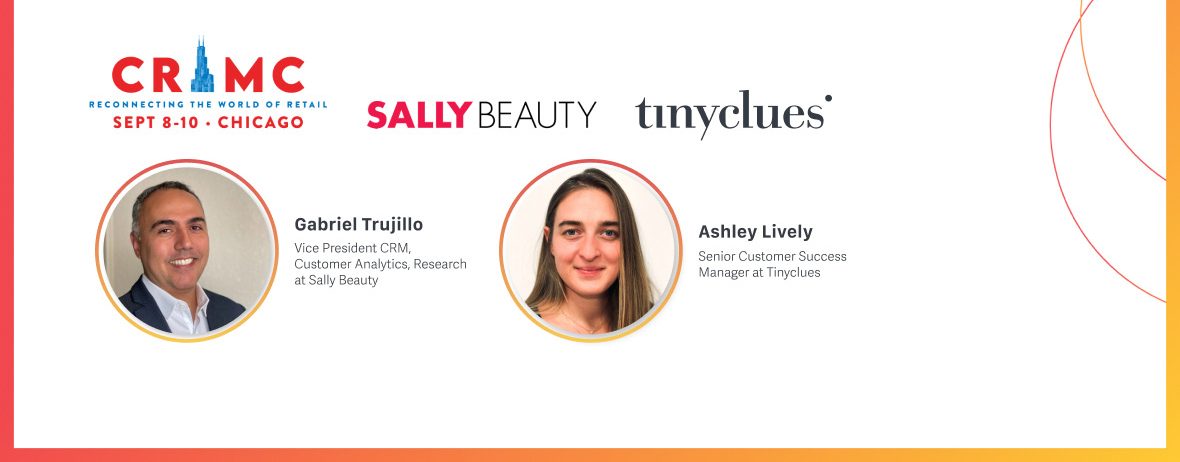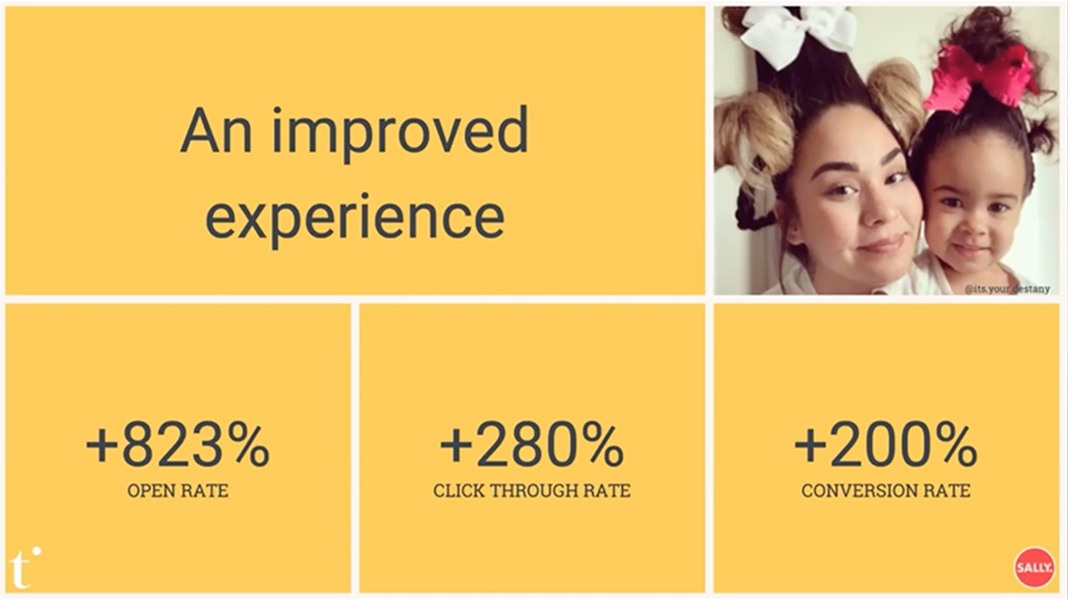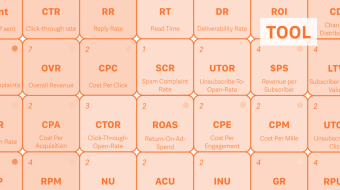In this webinar, Gabriel Trujillo, Vice President CRM, Customer Analytics & Research at Sally Beauty, and Ashley Lively, Senior Customer Success Manager at Tinyclues, discuss how the Sally Beauty team integrated machine learning into its strategy to deliver on business goals while remaining customer-centric.
Sally Beauty achieved results that were so high, they tried to debunk them in “10 different ways, but they couldn’t,” according to Gabriel.
Listen to Gabriel and Ashley by clicking below!
The Key Takeaways
The speakers
Gabriel is Vice President of CRM customer analytics and research at Sally Beauty. He’s a senior leader in marketing, loyalty and CRM with over 20 years of consistently delivering high quality content throughout his career with several widely recognized retail brands, he has masterminded forward-thinking approaches to marketing as well, versed in tracking market trends and capitalizing on opportunities. Gabriel knows the importance of building relationships as evidenced by one of his favorite sayings that I noticed in his profile from Theodore Roosevelt, and it is “the most important single ingredient in the formula of success is knowing how to get along with people”.
Ashley Lively is a senior customer success manager at Tinyclues. She has tremendous experience in building success for her clients. She’s worked with some great brands, including Tiffany’s, and she’s also an experienced cycling instructor, so she clearly knows how to make the wheels turn for her clients.
What is machine-learning?
Machine learning is very simply put: a “machine”, a computer, absorbs data on past events in order to learn on it. But it doesn’t do it with rules, it just learns without rules. It’s not programmed with rules in order to predict new events. Pretty much the same way that humans learn, to put it simply.
How does machine learning perform against traditional, in-house models?
What could Tinyclues do for Sally Beauty?
Sally Beauty has tested Tinyclues for several months, and their goal was pretty straightforward. They had several challenges to measure: how could they drive measurable traffic revenue to both their site and in stores? How could they get concrete numbers to tie to their database and really prove out that Tinyclues was working?
Sally Beauty pushed their analytics team as much as they could. They tried different approaches, different targeting and actually simplified the approach.
Tinyclues’ machine-learning engine outperformed their internal data analytics team in all tests. The results were across the spectrum and the open rate, the engagement, and the ultimate revenue for the targeted group was phenomenal.
What’s more, the test was very interesting, very intriguing, very easy, very simple to deploy and leverage.
Now Sally Beauty is still trying to improve how they target and how to improve on their results. But they are seeing great performances.
Of course, they used to have a targeting strategy. Everybody has a targeting segmentation based on historic performances: customers bought this brand or this profile. They also had lookalike models and predictive models, but how could they improve on that?
Tinyclues’ segmentation worked better in all configurations.
How is Tinyclues making Sally Beauty more customer-centric?
Driving to what all brands want to get to, meaning relevancy, balancing the volume of customer content, knowing what customers are going to respond to what message, Sally Beauty managed to reduce the number of emails they sent to a specific customer. Today, they don’t have to target a customer with emails on Mondays, Wednesdays, and Thursdays, based on their model.
If Tinyclues’ AI recommends that customers only need an email on Tuesday a specific week, that alleviates the number of emails sent that are maybe not as relevant.
Sally Beauty is now sending not just the right messages, but also the right number of messages over time for a specific customer.
Sally Beauty is today getting flat to positive results on LESS volume of emails sent, which frees up the space to target customers with other messages, or to simply give them a breathing space. And again, identifying the right opportunities of products and categories.
What are the results?
Triple digits.
Gabriel was joking around with his analytics team, as every time the data science team sees triple digits, their first reaction is not to believe it. The team tried to disprove it ten different ways and they couldn’t.
To do so, they took one email a week, then two emails a week, and three emails a week. Today, Sally Beauty is now rolling up to about 95% of their outgoing emails going through Tinyclues’ AI machine-learning engine.
The analytics team is still trying to figure out how to match or improve upon these results, and Gabriel challenges them every day to do so, but the results are there, and it’s pretty simple and it didn’t really require more analysts. It didn’t really require more data or different data. It didn’t require us to restructure the data.
Sally Beauty works with a lot of vendors, and it was a fairly simple connection with the Tinyclues environment.
The whole Tinyclues team ensured that whatever state their data was in, it was workable, could be connected, analyzed and provided back to them in an easy way.





